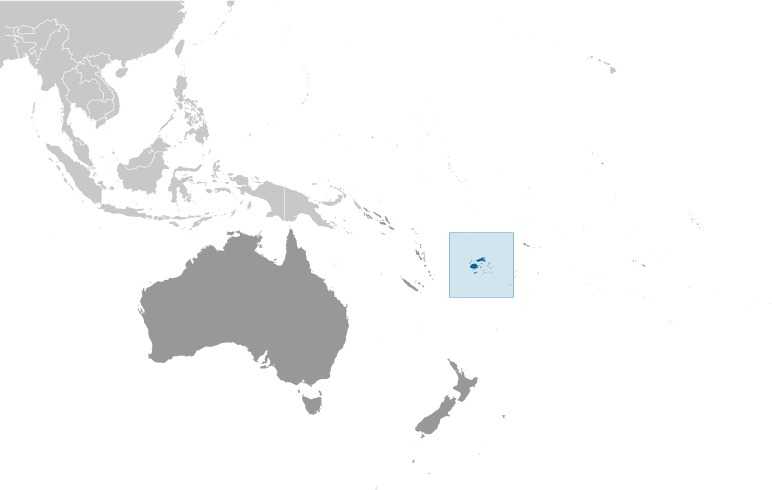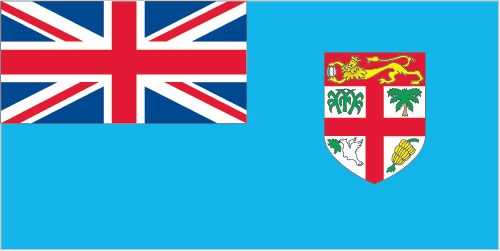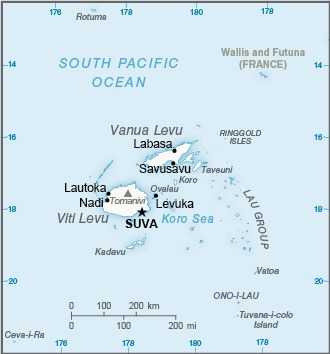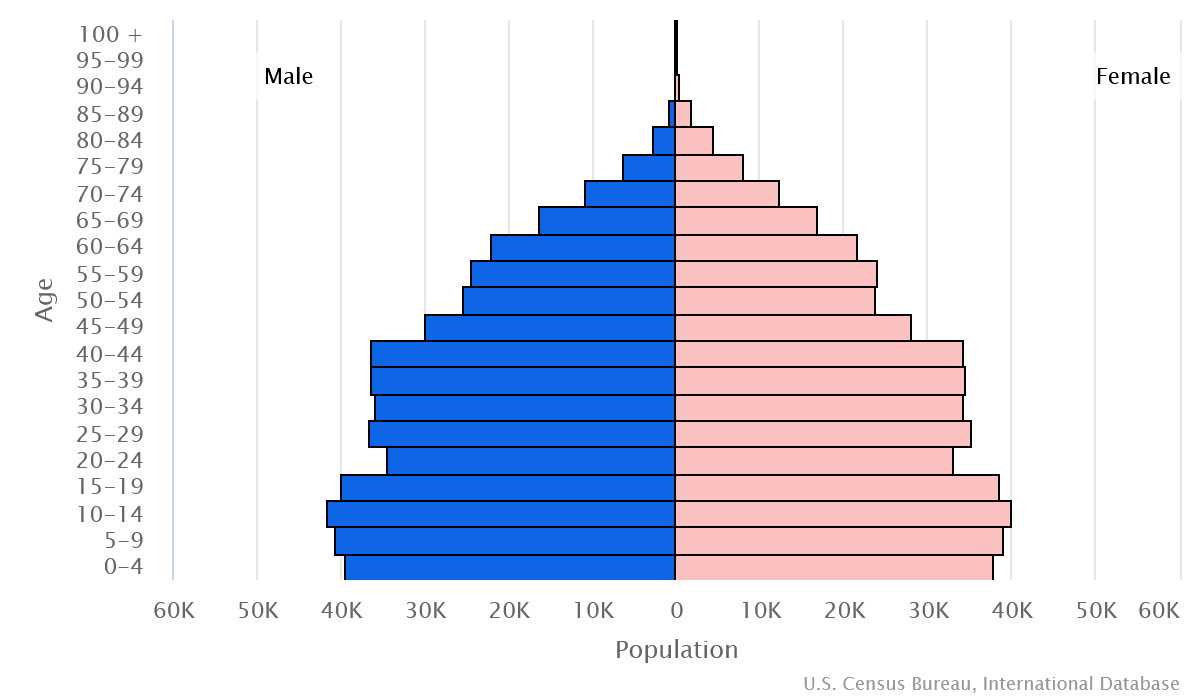Introduction
Background
Fiji became independent in 1970 after nearly a century as a British colony. Coups and a 1990 constitution that cemented native iTaukei control of Fiji led to heavy Indian emigration. The population loss resulted in economic difficulties but ensured that ethnic iTaukei became the majority. A new constitution enacted in 1997 was more equitable.
Geography
Area
total: 18,274 sq km
land: 18,274 sq km
water: 0 sq km
Climate
tropical marine; only slight seasonal temperature variation
Natural resources
timber, fish, gold, copper, offshore oil potential, hydropower
People and Society
Population
total: 951,611
male: 482,304
female: 469,307 (2024 est.)
Ethnic groups
iTaukei 56.8% (predominantly Melanesian with a Polynesian admixture), Indo-Fijian 37.5%, Rotuman 1.2%, other 4.5% (European, part European, other Pacific Islanders, Chinese) (2007 est.)
Languages
English (official), iTaukei (official), Fiji Hindi (official)
Religions
Protestant 45% (Methodist 34.6%, Assembly of God 5.7%, Seventh Day Adventist 3.9%, and Anglican 0.8%), Hindu 27.9%, other Christian 10.4%, Roman Catholic 9.1%, Muslim 6.3%, Sikh 0.3%, other 0.3%, none 0.8% (2007 est.)
Population growth rate
0.4% (2024 est.)
Government
Government type
parliamentary republic
Capital
name: Suva (on Viti Levu)
Executive branch
chief of state: President Ratu Wiliame KATONIVERE (since 12 November 2021)
head of government: Prime Minister Sitiveni Ligamamada RABUKA (since 24 December 2022)
Legislative branch
description: unicameral Parliament (55 seats; members directly elected in a nationwide, multi-seat constituency by open-list proportional representation vote with a 5% electoral threshold; members serve 4-year terms)
Economy
Economic overview
upper-middle income, tourism-based Pacific island economy; susceptible to ocean rises; key energy and infrastructure investments; post-pandemic tourism resurgence; improved debt standing; limited workforce
Real GDP (purchasing power parity)
$11.518 billion (2022 est.)
$9.597 billion (2021 est.)
$10.09 billion (2020 est.)
Real GDP per capita
$12,400 (2022 est.)
$10,400 (2021 est.)
$11,000 (2020 est.)
Agricultural products
sugarcane, cassava, taro, chicken, vegetables, coconuts, ginger, rice, milk, sweet potatoes (2022)
Industries
tourism, sugar processing, clothing, copra, gold, silver, lumber
Exports
$2.376 billion (2022 est.)
$1.171 billion (2021 est.)
$1.23 billion (2020 est.)
Exports - partners
US 39%, Australia 11%, Tonga 5%, NZ 5%, China 4% (2022)
Exports - commodities
water, fish, refined petroleum, wood, garments (2022)
Imports
$3.434 billion (2022 est.)
$2.344 billion (2021 est.)
$1.977 billion (2020 est.)
Imports - partners
Singapore 23%, China 16%, Australia 13%, NZ 11%, South Korea 8% (2022)
Imports - commodities
refined petroleum, plastic products, plastics, wheat, garments (2022)
Exchange rates
Fijian dollars (FJD) per US dollar -
Exchange rates:
2.201 (2022 est.)
2.071 (2021 est.)
2.169 (2020 est.)
2.16 (2019 est.)
2.087 (2018 est.)
Page last updated: Wednesday, May 15, 2024




